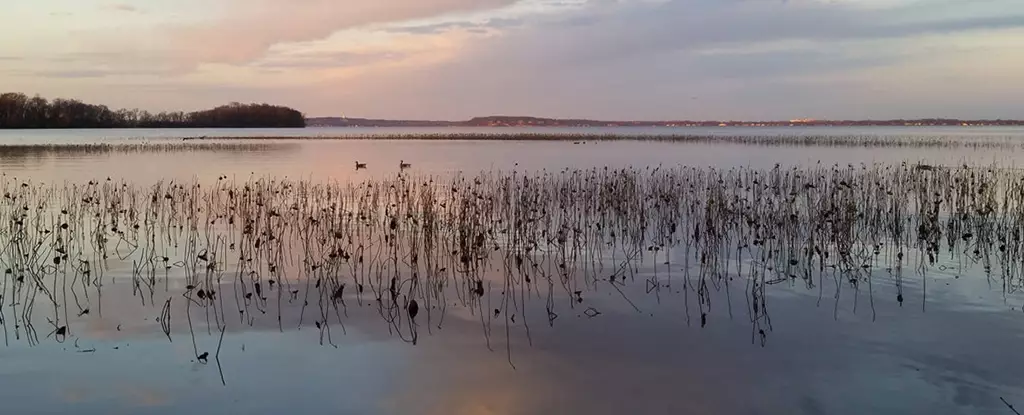Lake Mendota, located in Wisconsin, undergoes a remarkable transformation as the seasons change. From the serene ice cover of winter to the vibrant algal blooms of summer, this lake serves as a critical habitat for diverse microbial life. Recent research conducted by scientists from the University of Texas at Austin has shed light on how these seasonal variations influence the evolutionary dynamics of bacterial communities within the lake. The study, which spans over two decades and involved analyzing 471 lake microbe samples, reveals intricate patterns of genetic change among microbiota, underscoring the interplay between ecological shifts and microbial evolution.
The research team employed cutting-edge techniques to delve into the genetic makeup of the bacteria present in Lake Mendota. By examining thousands of bacterial genomes over time, the researchers sought to characterize the genetic variations that occur within and between species as environmental conditions fluctuated. Utilizing powerful computational tools, they constructed metagenomes from each water sample, allowing them to examine the intricate relationships between DNA fragments. This meticulous approach enabled them to uncover the underlying genetic stories of different bacterial species as they adapted to seasonal changes.
One of the most striking findings of the study is the cyclical pattern of evolution observed among the bacterial species. The data revealed that approximately 80 percent of the bacterial genomes exhibited seasonal variations, characterized by rapid evolutionary changes followed by reversion to nearly identical genetic states as the seasons cycled. This phenomenon presents an intriguing analogy—like a film played forwards and then reversed—demonstrating the resilience and adaptability of microbial communities in the face of environmental fluctuations.
The researchers noted that these cycles of evolution occur within a remarkably short timescale, with microbes typically living only a few days. This rapid life cycle allows for thousands of generations to exist in the span of just one year, showcasing an accelerated evolutionary process that can adapt to the dynamic environmental conditions of the lake.
Beyond the cyclical patterns of evolution, the research also highlighted instances where bacterial strains displayed more sustained changes in their genetics, particularly in response to significant environmental stressors. A notable example occurred in 2012, marked as a notably hot and dry summer. During this time, the researchers observed substantial shifts in the genes responsible for nitrogen metabolism among the bacterial communities. This change was likely tied to a dip in nitrogen-producing algae, attributed to decreased water inflow into the lake. Such findings emphasize the ongoing adaptations that bacteria undergo in response to climate variability and stress.
The implications of this research extend beyond just microbial evolution; they offer critical insights into how ecological dynamics shape evolutionary processes. As marine scientist Brett Baker articulated, this study marks a pivotal moment in our understanding of microbial ecology, suggesting that ecology and evolution are intricately linked rather than functioning as separate entities. This perspective is particularly vital in an era marked by climate change, as shifts in environmental conditions may alter the balance of microbial communities in ways that significantly impact larger ecological systems.
By understanding how different bacterial strains might respond to warming temperatures and changing weather patterns, scientists can better predict the carbon absorption capabilities of lakes and anticipate shifts in aquatic food webs. These insights can help reveal potential consequences of climate change, guiding conservation efforts as we strive to maintain ecological balance amidst rapid environmental alterations.
The findings from Lake Mendota serve as a lens through which we can observe the complex interplay between environmental changes and microbial evolution. As researchers continue to uncover the secrets of microbial life in various ecosystems, the lessons learned here will likely resonate far beyond the shores of this Wisconsin lake, highlighting the importance of understanding microbial dynamics in the face of climate change and evolving ecological landscapes. Further studies will undoubtedly build upon these findings, offering deeper insights into the resilience and adaptability of life at the microscopic level.


Leave a Reply